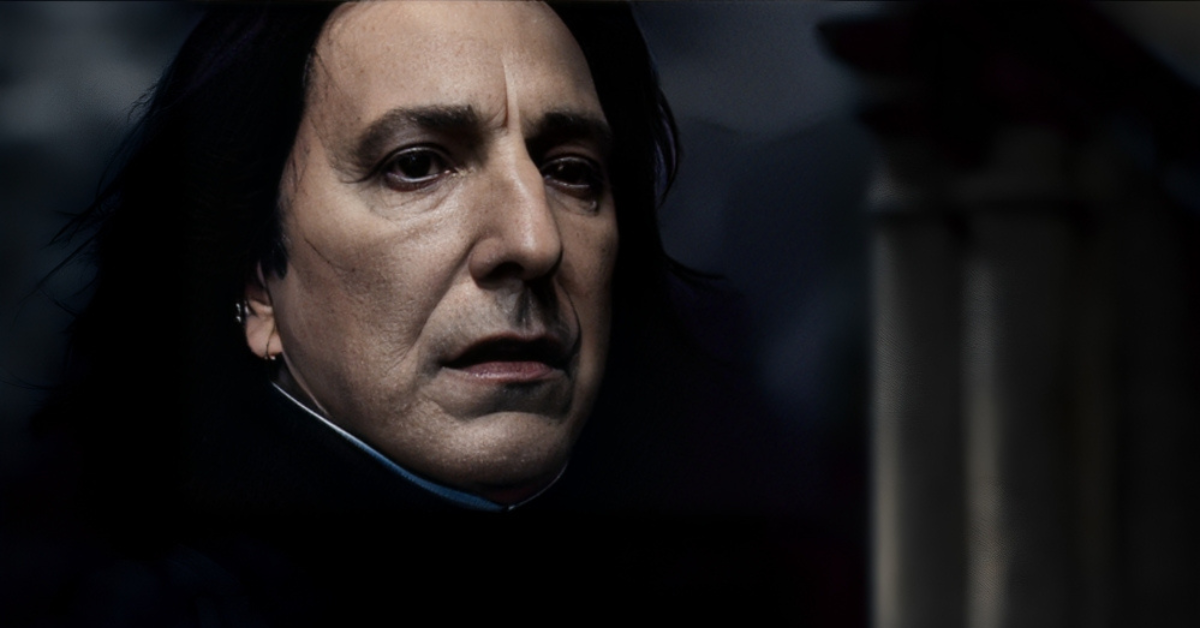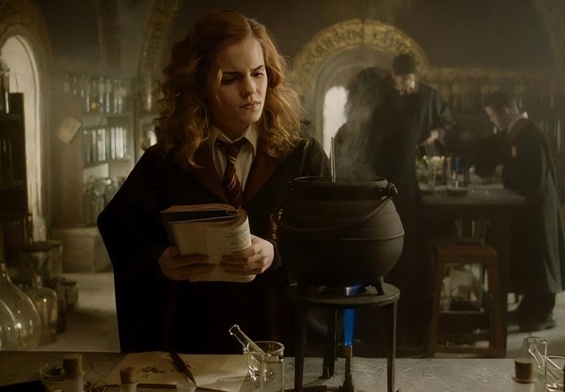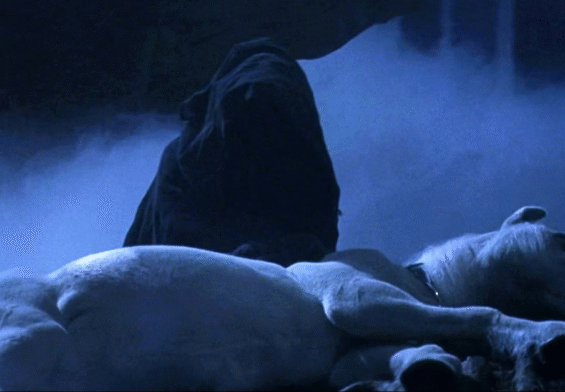
In the world of Harry Potter, Albus Dumbledore stood as an iconic figure of wisdom, compassion, and unwavering leadership. As headmaster of Hogwarts School, his influence extended far beyond the walls of the magical institution, shaping the fate of the wizarding world itself.
Furthermore, Dumbledore’s profound empathy and understanding of human nature set him apart as a leader who inspired trust and loyalty in those who followed him. His wisdom transcended the boundaries of age and experience, offering guidance and comfort to all who sought his counsel.
When news of his tragic demise spread, it sent shockwaves through both the magical community and readers alike. Dumbledore’s death was not just the loss of a beloved character; it was the unraveling of a powerful symbol of hope and guidance in the face of darkness.
The impact of his passing reverberated, leaving an indelible mark on all who revered and respected him.
But what if we don’t truly understand Dumbledore’s death the way that we thought we did? What if Dumbledore died in a way completely unlike what we could have imagined? And what if Dumbledore’s ‘plan’ was even more intricate than we ever realized?
Today we will peel back the layers of Dumbledore’s death and uncover the TRUTH.
In the Half-Blood Prince, we learn that Dumbledore is dying from a cursed ring that he had obtained while seeking to destroy one of Voldemort’s Horcruxes. The small ring was etched with intricate symbols and bore a dark, foreboding stone at its center.
And from the moment Albus first found the stone and noticed its distinct markings, he immediately realized that it was one of the three Deathly Hallows. Knowing the true power of the stone, Dumbledore’s curiosity got the better of him, and he ended up placing the ring on his finger, securing his fate.
In the end, it was the allure of the Resurrection Stone that prompted Dumbledore to slide the ring onto his finger, and receive Voldemort’s lethal curse. Why did he do it? Well, to Dumbledore, the stone represented one last chance at seeing his sister, Ariana, who tragically died decades and decades prior.
Did Dumbledore know that the ring was a Horcrux? Yes. But the allure of the stone caused a momentary lapse in his judgement, resulting in him being afflicted with a lethal curse. And immediately after placing the Cursed Ring on his finger, Dumbledore realizes that his clock is ticking, his time is running out.
But perhaps more importantly, Dumbledore knew that soon he would no longer be able to contribute to the war effort and help to fight against the Death Eaters.
This caused him to put a plan into motion: one that accounted for his death. He made Snape swear to take on the responsibility of killing him in the event that Draco was unable, a selfless action that would indirectly save Draco.
If you don’t mind dying,” said Snape roughly, “why not let Draco do it?
That boy’s soul is not yet so damaged,” said Dumbledore. “I would not have it ripped apart on my account.
And as per the rule of the unbreakable vow that Snape had made with Narcissa regarding Draco, Snape was responsible for taking action on Draco’s part in the event that Draco was unable. So by killing Dumbledore himself, Snape was effectively saving Draco, and doing Dumbledore a favor.
This did, however, leave Snape with the daunting task of killing the man that he had grown to like – the man that took him in after Snape defected from the Death Eaters.
And this is where it all gets a bit messy… And in Chapter 27, The Lightning Struck Tower, we get to watch it all unfold:
Snape said nothing, but walked forwards and pushed Malfoy roughly out of the way. The three Death Eaters fell back without a word. Even the werewolf seemed cowed.
Snape gazed for a moment at Dumbledore, and there was revulsion and hatred etched in the harsh lines of his face.
‘Severus… please…’
Snape raised his wand and pointed it directly at Dumbledore.
‘Avada Kedavra!’
A jet of green light shot from the end of Snape’s wand and hit Dumbledore squarely in the chest.
Harry’s scream of horror never left him; silent and unmoving, he was forced to watch as Dumbledore was blasted into the air: for a split second he seemed to hang suspended beneath the shining skull, and then he fell slowly backwards, like a great rag doll, over the battlements and out of sight.
In order to put a definitive end to Dumbledore, Snape ends up using the most effective method of killing known to us – Avada Kedavra, AKA the Killing Curse.
The Killing Curse is one of the three Unforgivable Curses – curses that are ‘unforgivable’ because of their sadistic nature. Avada Kedavra’s purpose is simple: it causes the victim to instantly die.
If you want to kill your victim, then this is the spell to use. The spell creates a blindingly intense green bolt of light right before the victim simply drops dead. And so Snape, justifiably so, uses the Killing Curse to take Dumbledore down.
But here’s the issue… It didn’t work.
We learn on two separate occasions that Unforgivable Curses WILL NOT WORK if there is insufficient ‘intent’ or psychological commitment.
Fake Moody explains in the ‘Goblet of Fire’ that the whole DADA class could aim their wands at him and say Avada Kedavra and “I doubt I would get so much as a nosebleed.” And in the Ministry, Bellatrix explains that you need to really ‘MEAN’ it when you use them.
Never used an Unforgivable Curse before, have you, boy?” she yelled. She had abandoned her baby voice now. “You need to mean them, Potter! You need to really want to cause pain – to enjoy it – righteous anger won’t hurt me for long – I’ll show you how it is done, shall I? I’ll give you a lesson.
Therefore, I suspect that Snape lacked the ability to conjure the necessary emotions to kill Dumbledore in this way. And I think that Dumbledore ACTUALLY died from something else… And the biggest clue here lies in Harry’s immobilization.
Moments prior to Dumbledore’s death, he had hit Harry with a full-body bind curse.
Harry’s body became instantly rigid and immobile, and he felt himself fall back against the Tower wall, propped like an unsteady statue, unable to move or speak.
He could not understand how it had happened – Expelliarmus was not a Freezing Charm – Then, by light of the mark, he saw Dumbledore’s wand flying in an arc over the edge of the ramparts and understood… Dumbledore had wordlessly immobilized Harry.
Yet, despite Dumbledore being hit with the Killing Curse, Harry remained immobilized – unable to move or speak. It’s only when Dumbledore is out of sight and hits the ground that he’s finally liberated and released from the spell.
Therefore, Dumbledore died from impact upon hitting the ground, and NOT from Snape’s curse.
Dumbledore’s restraining spell broke when the headmaster’s life ended — at the bottom of the Astronomy Tower, not the top. It’s not until the beginning of the next chapter, ‘Flight of the Prince’ that it’s revealed that Harry can move again.
As they vanished through the door, Harry realized he could move again; what was now holding him paralyzed against the wall was not magic, but horror and shock.
Some fans have argued that it was ‘horror and shock’ leaving Harry paralyzed for the duration of Dumbledore’s fall, but I don’t agree with that. I think that he was paralyzed through ‘horror and shock’ only AFTER Dumbledore had hit the ground and genuinely died.
After Dumbledore was hit with the Killing Curse, Harry was still very much immobilized – the reason for this being that Dumbledore SURVIVED the blast. I think the proof is in the quote:
Harry’s scream of horror never left him; silent and unmoving, he was forced to watch as Dumbledore was blasted into the air.
And when Harry later considers his own death and reflects on Dumbledore’s, his thoughts are not of Avada Kedavra, but of the broken body at the foot of the tower.
But there was still no preparation for seeing him here, spread-eagled, broken: the greatest wizard Harry had ever, or would ever, meet. Dumbledore’s eyes were closed, but for the strange angle of his arms and legs, he might have been sleeping.
Of course, this is JUST a theory, but if you think about it… it does check out.
Snape certainly didn’t want to kill Dumbledore, and for that reason, I suspect that he would have had difficulty mustering the necessary intent. Which brings me to an interesting moment from the film. In the books, it’s clear as day that the spell produced from Snape’s wand was green.
A jet of green light shot from the end of Snape’s wand.
But something I noticed in the film is that Snape’s spell was more of a blue. I found significance in this moment because it’s reiterated again and again throughout the books that Avada Kedavra is a ‘green’ jet of light.
In the past, I made a theory blog post where I discuss the potential relationships between spell colors and their meanings. And in that blog post, I outlined that for a spell to be produced in its ‘truest’ form, the spell requires intent – and the spell must be used for the purpose for which it was made.
By this logic, someone producing an Expelliarmus properly, and for the right reason, would produce a pure, unwavering red color from the tip of their wand. The same goes for Avada Kedavra – if used accurately and for the right reason, producing an unwavering ‘green’ jet of light.
So, my theory for Snape’s ‘blue’ spell is this: he had regret. In order to produce Avada Kedavra, or any of the Unforgivable Curses for that matter, it requires ‘intent’, and it’s generally suggested that the degree of intent will determine how successful the spell is.
My thought is that Snape had JUST enough intent to cast the spell, but not enough to produce the spell in its purest form. This would explain why the spell color wavered from the traditional ‘green’.
Snape didn’t want to kill Dumbledore, but he knew that he had to, so – being the pragmatic man that he is, he got the task done. However, that certainly doesn’t mean that he ever wanted to kill him – it was the last thing that Snape wanted to do, he just knew that it was the ‘right’ thing to do.
Perhaps the ‘blue’ in the film was a subtle nod to the fact that this is not how Dumbledore truly died… even if the spell was indeed green in the novels. And that’s it for this blog post!
What do you think? Did Dumbledore die from the FALL or from Snape’s curse?
Let me know down in the comment section below.



